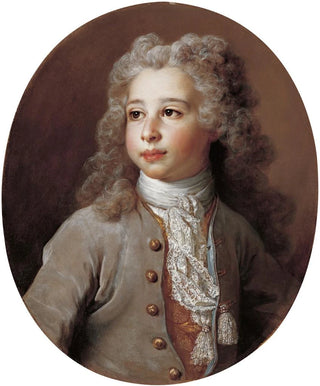Art print | Portrait of François Emmanuel Pommyer - Nicolas de Largillière


View from behind

Frame (optional)
In the world of art, some works transcend time and capture the very essence of their era. The "Art print of François Emmanuel Pommyer" by Nicolas de Largillière is undoubtedly one of these remarkable creations. This painting, which evokes not only the face of a man but also the spirit of a period, invites us to delve into 17th-century France, a time rich in cultural and artistic upheavals. Through this portrait, Largillière does not merely depict his subject; he immortalizes a personality, a story, and an aesthetic that continue to inspire art enthusiasts today.
Style and uniqueness of the work
Nicolas de Largillière's style is distinguished by his ability to combine refined technique with authentic expressiveness. In the "Art print of François Emmanuel Pommyer," the artist uses a palette of warm, luminous colors that give a palpable life to his subject. The details of the clothing, carefully painted, testify to exceptional craftsmanship, while Pommyer's facial expression reveals a psychological depth that goes beyond simple representation. Largillière manages to capture the very essence of his model, both in his posture and in his gaze, creating a powerful emotional connection between the work and the viewer. This portrait is not limited to a mere image; it becomes a window into the soul of the man it depicts, offering a reflection on identity and social status at the heart of 17th-century France.
The artist and his influence
Nicolas de Largillière, born in 1656 in Paris, is one of the most influential portraitists of his time. Trained in the workshops of the great masters of the era, he developed a style that is uniquely his own, combining the rigor of drawing with a lively approach to color. Largillière made a name for himself in a period when portraiture was a privileged means of asserting one's place in society. His works, which demonstrate meticulous observation of human traits, marked a generation of artists and continue to inspire contemporary creators. The way he managed to integrate

Matte finish

View from behind

Frame (optional)
In the world of art, some works transcend time and capture the very essence of their era. The "Art print of François Emmanuel Pommyer" by Nicolas de Largillière is undoubtedly one of these remarkable creations. This painting, which evokes not only the face of a man but also the spirit of a period, invites us to delve into 17th-century France, a time rich in cultural and artistic upheavals. Through this portrait, Largillière does not merely depict his subject; he immortalizes a personality, a story, and an aesthetic that continue to inspire art enthusiasts today.
Style and uniqueness of the work
Nicolas de Largillière's style is distinguished by his ability to combine refined technique with authentic expressiveness. In the "Art print of François Emmanuel Pommyer," the artist uses a palette of warm, luminous colors that give a palpable life to his subject. The details of the clothing, carefully painted, testify to exceptional craftsmanship, while Pommyer's facial expression reveals a psychological depth that goes beyond simple representation. Largillière manages to capture the very essence of his model, both in his posture and in his gaze, creating a powerful emotional connection between the work and the viewer. This portrait is not limited to a mere image; it becomes a window into the soul of the man it depicts, offering a reflection on identity and social status at the heart of 17th-century France.
The artist and his influence
Nicolas de Largillière, born in 1656 in Paris, is one of the most influential portraitists of his time. Trained in the workshops of the great masters of the era, he developed a style that is uniquely his own, combining the rigor of drawing with a lively approach to color. Largillière made a name for himself in a period when portraiture was a privileged means of asserting one's place in society. His works, which demonstrate meticulous observation of human traits, marked a generation of artists and continue to inspire contemporary creators. The way he managed to integrate






